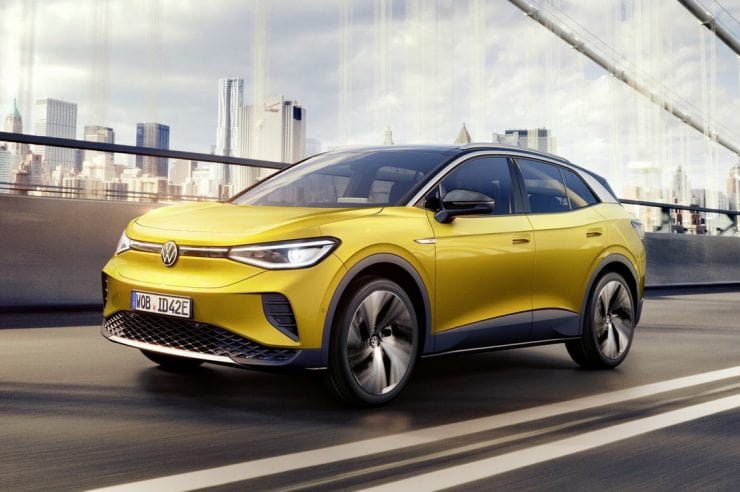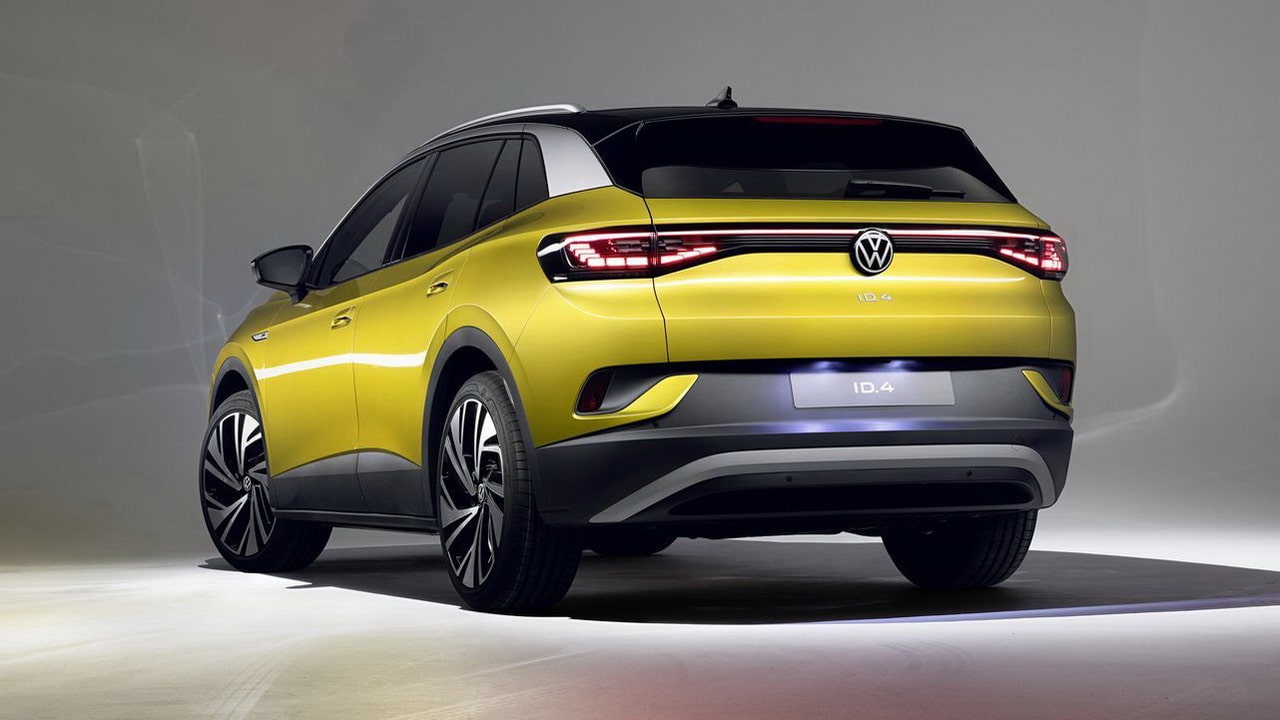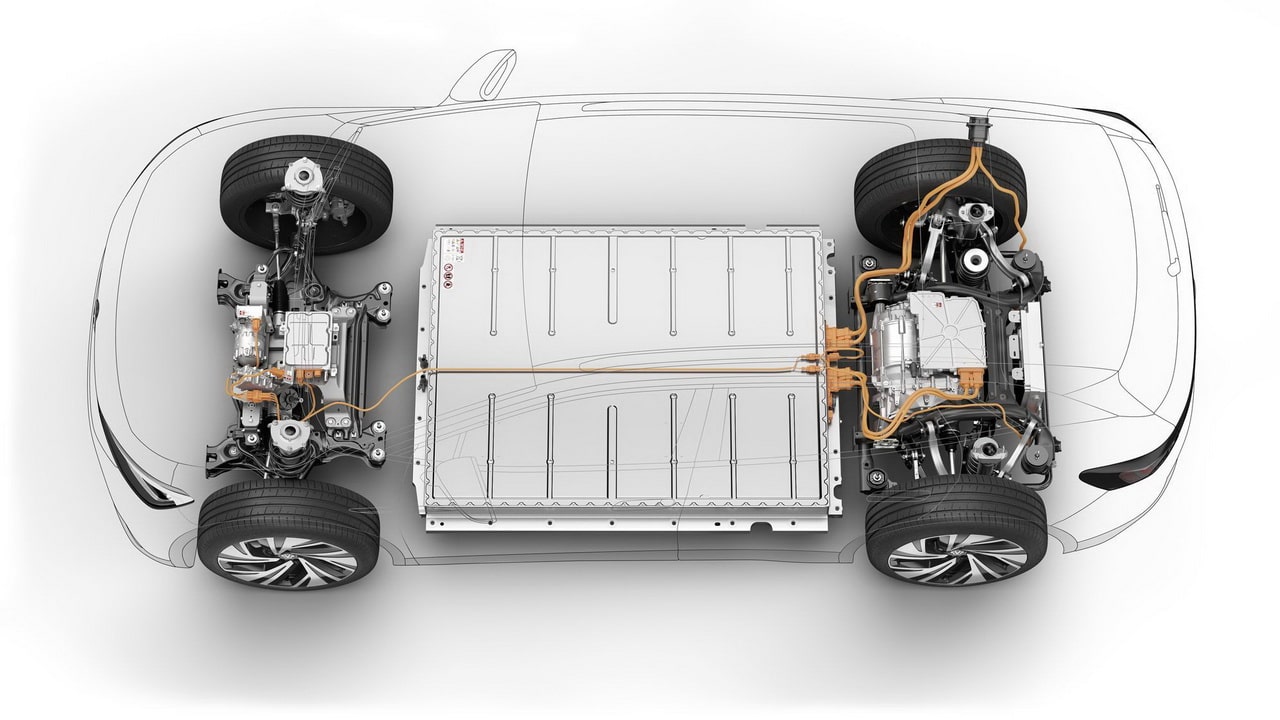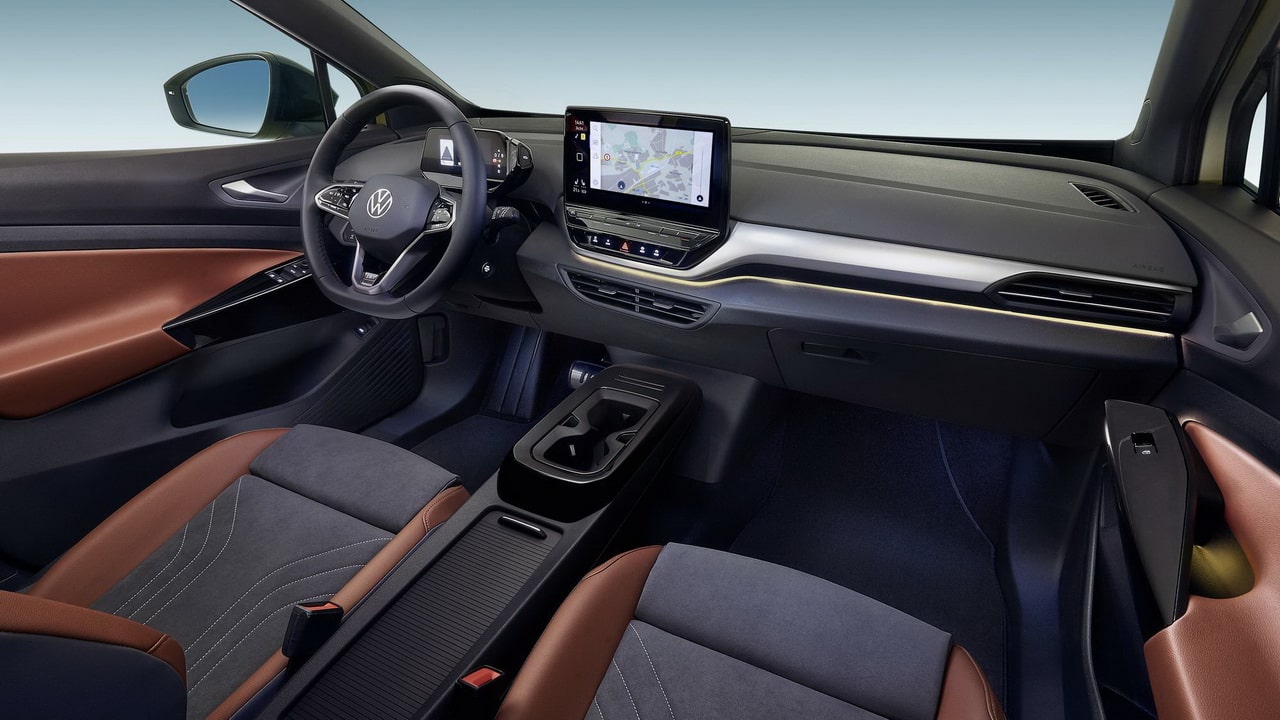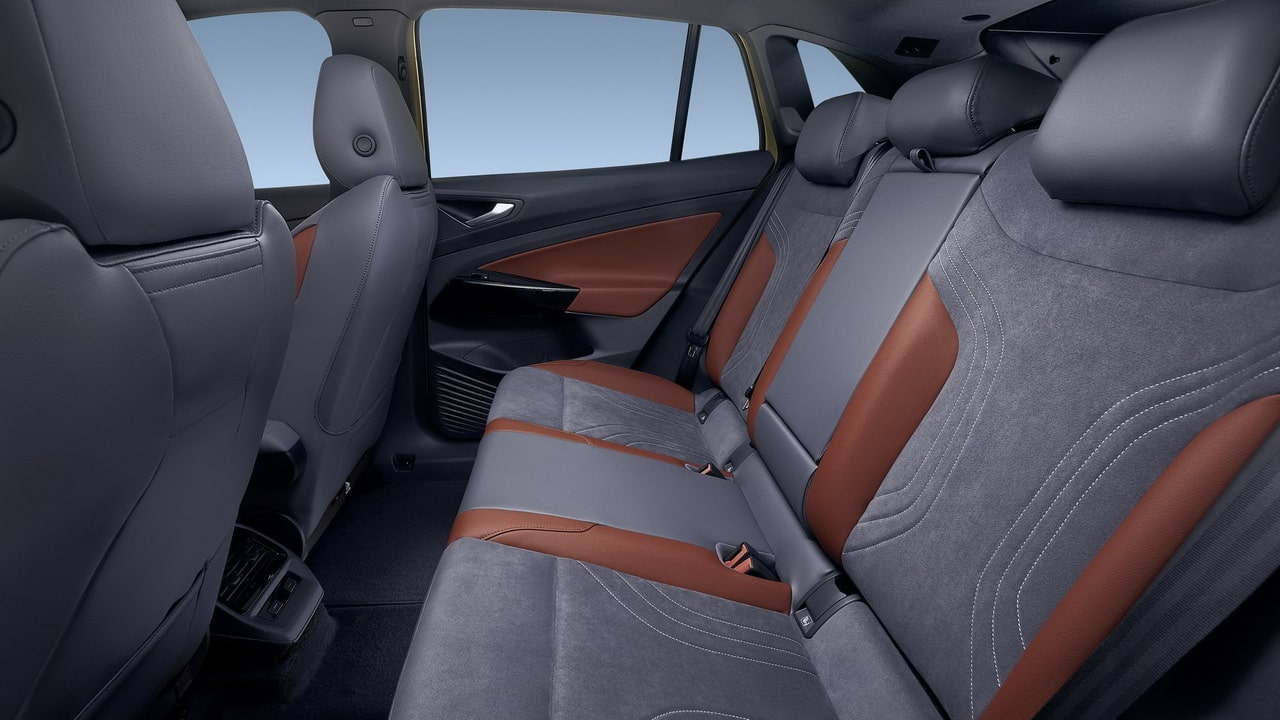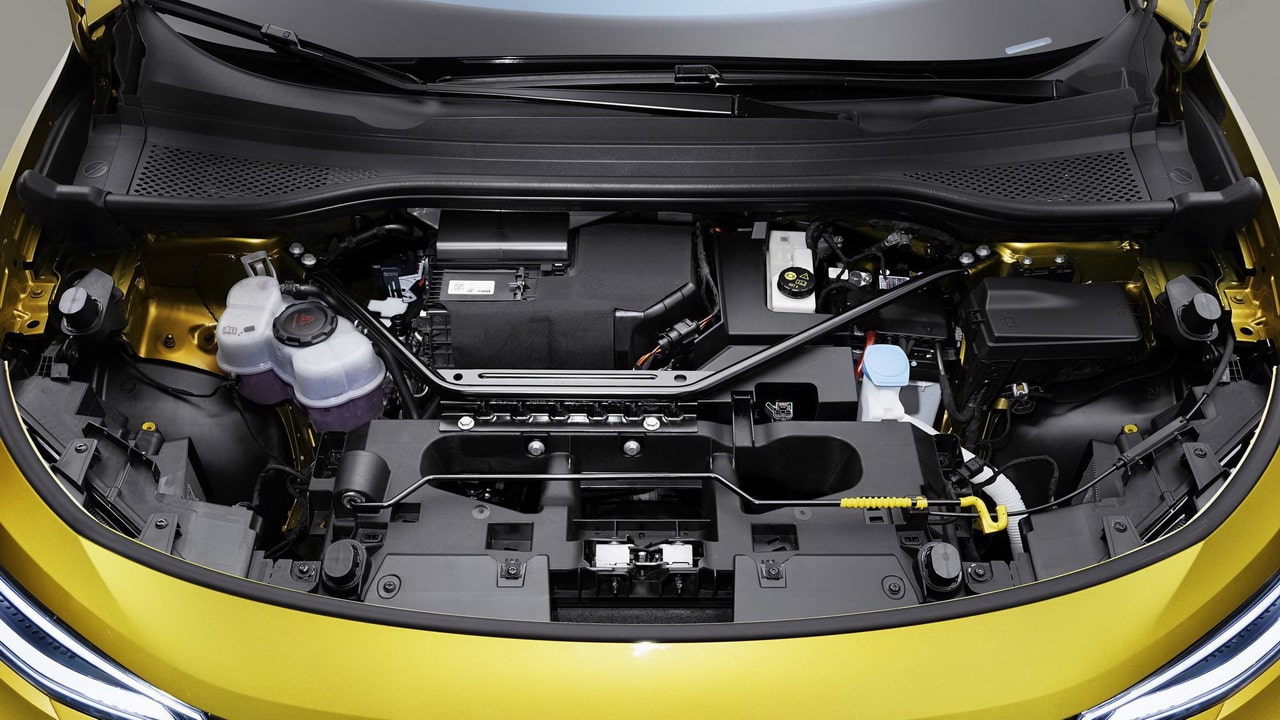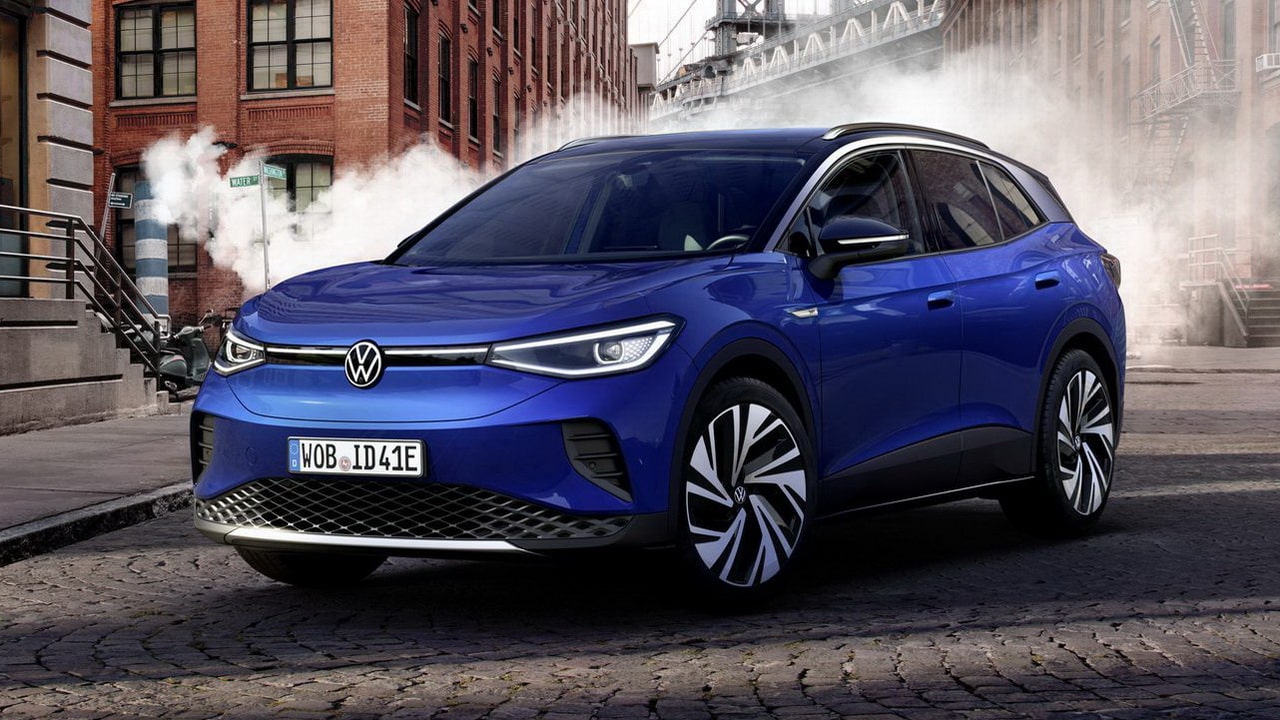volkswagen way to zero что значит
Новый проект «Vision Zero» от Volkswagen
Концерн Volkswagen представил проект «Vision Zero», в рамках которого будут разработаны и внедрены в автомобили новые системы безопасности. Так, машины смогут самостоятельно выезжать с узких парковочных мест по команде со смартфона или в полностью автоматическом режиме проехать участки дорог, где ведутся ремонтные работы.
Помимо этого, вместе с электронными системами, которые смогут обнаруживать пешеходов и задействовать тормоза, если водитель не успеет вовремя среагировать на опасность, в «Фольксвагене» намерены сделать серийными системы, способные полностью взять контроль за машиной на себя, когда водитель находится в критическом состоянии и не может сам справиться с управлением.
Как сообщалось ранее, концерн Volkswagen ведет разработку автопилота. Электроника будет способна самостоятельно управлять автомобилем при движении на автомагистралях на скорости до 130 километров в час. Машина с такой системой сможет сама соблюдать безопасную дистанцию до едущих впереди автомобилей, поддерживать заданную водителем скорость, самостоятельно снижать ее при приближении поворота и удерживает машину посередине полосы в соответствии с разметкой.
Аналогичные системы появятся и на моделях марки Audi, входящей в состав концерна Volkswagen. Например, машины этого бренда получат автопарковщик, который не требует нахождения водителя в салоне. Благодаря специальным сенсорам автомобили с этой системой смогут сами найти свободное место в многоярусном гараже, припарковаться, выключить мотор и запереть двери.
Way to Zero: Volkswagen presents roadmap for climate-neutral mobility
At the first Way to Zero Convention, Volkswagen today gave details of its plans for decarbonizing the company and its products. The company intends to be net carbon neutral by 2050 at the latest. A new interim milestone is the targeted 40-percent reduction in CO2 emissions per vehicle in Europe by 2030 – substantially outperforming the Group target of 30 percent (baseline: 2018). As a result, an average Volkswagen would emit around 17 tons less carbon dioxide. As well as accelerating the transition to e-mobility, the production (including supply chain) and operation of electric cars is to be made net carbon neutral. Added to this is the systematic recycling of the high-voltage batteries from old electric vehicles.
«Volkswagen stands for sustainable e-mobility for all. We’ve set out on the ‘Way To Zero’ and are consistently placing the environment at the focus of all our activities,” said Ralf Brandstätter, CEO of Volkswagen. “Our big electric offensive was just the start. We’re taking a holistic approach to decarbonization: from production through service life to recycling. And we’re the first car maker to support the expansion of renewable energies on an industrial scale.”
Volkswagen supports the construction of wind farms and solar plants
A key factor in achieving carbon-neutral e-mobility is to be able to charge vehicles consistently with electricity generated entirely from renewable sources. This alone would reduce CO2 emissions by almost half compared with the standard EU electricity mix. Already today, Volkswagen offers its customers green electricity for charging at home (Volkswagen Naturstrom) and on the road (e.g. at IONITY charging stations). The company is now going one step further. Volkswagen is the first car maker to directly support the expansion of renewable energy on a large scale. As a result, new wind farms and solar plants are to be constructed in several regions of Europe by 2025.
Contracts for the first projects have already been signed with energy company RWE. In Germany, Volkswagen is supporting the construction of a solar plant with a total capacity of 170 million kilowatt hours each year. The associated plant will be completed in Tramm-Göthen in northeastern Germany by the end of 2021 and is being constructed without any state subsidies at all. Incorporating around 420,000 solar modules, it is the largest independent solar project in Germany.
It is planned that all projects together will generate around seven terawatt hours of additional green electricity by 2025. The amount of renewable electricity going into the grid will grow in parallel with the number of ID. vehicles. In this way, Volkswagen is improving the climate footprint of the ID. family and creating the basis for the net carbon neutral use of its electric fleet.
Green production and supply chain
This year already, Volkswagen will be switching to other sustainable components in its ID. vehicles, including battery housings and wheel rims made from green aluminum and tires from low-emission production. There are more than ten focus components which will enable us to improve the carbon footprint of the ID. family by around two tons per vehicle in the years ahead. When it comes to new vehicle projects, Volkswagen will be making CO2 emissions a key criterion in awarding contracts to suppliers. In this way, the company intends to work with its suppliers to gradually improve their carbon footprint and ensure the sustainability of its supply chain. The company is also pursuing a clear decarbonization strategy in the in-house production of components at Volkswagen Group Components. As such the giga-factories for battery cell production announced during Power Day are to be supplied with entirely green electricity.
The systematic recycling of batteries, which will allow more than 90 percent of raw materials to be reused in the future, is intended to make a further contribution to reducing CO2 emissions. The goal is a closed loop for the battery and its raw materials that the company has at its own disposal across the Group. Volkswagen Group Components is already operating an initial recycling facility in Salzgitter.
Accelerating the electric offensive
Way to Zero Convention for an open dialog with government, industry and society
“The ‘Way to Zero’ is our roadmap for effective climate protection, with clear and ambitious milestones. We live up to our responsibility for the environment. The ‘Way to Zero’ will provide us with a real competitive advantage. In the future, employees, customers and investors will give preference to those companies which place their social and environmental responsibility at the heart of their business. Sustainability will thus become a crucial factor in corporate success,” said Ralf Brandstätter. “However, Volkswagen cannot shoulder the decarbonization of mobility on its own. Government, industry and society need to come together to develop good ideas and make courageous investments.”
With the Way to Zero Convention, Volkswagen aims to foster an open dialog with government, industry and society. The day-long event, which was entirely digital due to the coronavirus pandemic, was attended by more than 20 speakers from political parties, NGOs, scientific institutions and other companies alongside representatives of Volkswagen.
Volkswagen way to zero что значит
Текущая неделя выдается довольно насыщенной на инфоповоды касательно электрического транспорта. Вчера компания Opel представила электрокроссовер Mokka и огласила его стоимость, чуть позже Tesla провела собственное мероприятие Tesla Battery Day, теперь же Volkswagen официально презентовала ID.4.
Volkswagen уже тизерила внешний вид и интерьер ID.4, но теперь у нас появилась возможность рассмотреть его в деталях. Внешне автомобиль напоминает слегка увеличенную версию ID.3, что и не удивительно. Кузов имеет плавные линии, по периметру предусмотрена пластиковая защита. Особенно выделяется LED-оптика спереди и сзади, которая визуально соединена тонкими линиями. IQ.Light LED матричные фары умеют вырезать встречные машины и объекты на дороге, а также интересно приветствуют водителя, поворачивая светодиодные модули.
В салоне всё по-немецки минималистично, но в то же время выглядит стильно, особенно в варианте с белым рулевым колесом и такими же светлыми акцентами. Не знаю насколько практичен такой вариант, но смотрится нарядно. Перед водителем расположен 5.3″ дисплей приборной панели с рычагом переключения режимов езды, а по центру торпедо находится 10″ или 12″ экран мультимедийной системы. Под лобовым стеклом есть светодиодная полоса, которая реагирует на голосовые команды водителя. Также предусмотрена система Head-up Display с технологией дополненной реальности.
ID.4 построен на платформе MEB, разработанной для электрокаров. Длина автомобиля составляет 4.58 метра, объем багажного отделения составляет от 543 до 1575 литров. Коэффициент аэродинамического сопротивления — 0.28, дорожный просвет — 21 см. Для водителя будет полезным набор технологий безопасности IQ.Drive, которые помогают во время движения.
Кроссовер оборудован электрическим мотором мощностью 150 кВт (204 л.с.), который установлен на задней оси. Разгон от 0 до 100 км/ч занимает 8.5 секунды, максимальная скорость — 160 км/час. Максимальная емкость устанавливаемых аккумуляторов может составлять 77 кВт*ч, что дает порядка 520 км запаса хода согласно циклу WLTP. Поддерживается как AC, так и DC-зарядка мощностью до 125 кВт. Последняя позволяет зарядить электрокар от 5% до 80% чуть более чем за полчаса.
Как вам новый Volkswagen ID.4? Какой бы кроссовер выбрали, ID.4 или Opel Mokka? Делитесь впечатлениями в комментариях!
Way to Zero: Volkswagen presents roadmap for climate-neutral mobility
At the first Way to Zero Convention, Volkswagen today gave details of its plans for decarbonising the company and its products. The company intends to be net carbon neutral by 2050 at the latest. A new interim milestone is the targeted 40-percent reduction in CO2 emissions per vehicle in Europe by 2030 – substantially outperforming the Group target of 30 percent (baseline: 2018). As a result, an average Volkswagen would emit around 17 tons less carbon dioxide. As well as accelerating the transition to e-mobility, the production (including supply chain) and operation of electric cars is to be made net carbon neutral. Added to this is the systematic recycling of the high-voltage batteries from old electric vehicles.
“Volkswagen stands for sustainable e- mobility for all. We’ve set out on the ‘Way To Zero’ and are consistently placing the environment at the focus of all our activities,” said Ralf Brandstätter, CEO of Volkswagen. “Our big electric offensive was just the start. We’re taking a holistic approach to decarbonisation: from production through service life to recycling. And we’re the first car maker to support the expansion of renewable energies on an industrial scale.”
Volkswagen supports the construction of wind farms and solar plants
A key factor in achieving carbon-neutral e-mobility is to be able to charge vehicles consistently with electricity generated entirely from renewable sources. This alone would reduce CO2 emissions by almost half compared with the standard EU electricity mix. Already today, Volkswagen offers its customers green electricity for charging at home (Volkswagen Naturstrom) and on the road (e.g. At IONITY charging stations). The company is now going one step further. Volkswagen is the first car maker to directly support the expansion of renewable energy on a large scale. As a result, new wind farms and solar plants are to be constructed in several regions of Europe by 2025.
Contracts for the first projects have already been signed with energy company RWE. In Germany, Volkswagen is supporting the construction of a solar plant with a total capacity of 170 million kilowatt hours each year. The associated plant will be completed in Tramm-Göthen in northeastern Germany by the end of 2021 and is being constructed without any state subsidies at all. Incorporating around 420,000 solar modules, it is the largest independent solar project in Germany.
It is planned that all projects together will generate around seven terawatt hours of additional green electricity by 2025. The amount of renewable electricity going into the grid will grow in parallel with the number of ID. Vehicles. In this way, Volkswagen is improving the climate footprint of the ID. Family and creating the basis for the net carbon neutral use of its electric fleet.
This year already, Volkswagen will be switching to other sustainable components in its ID. Vehicles, including battery housings and wheel rims made from green aluminum and tires from low-emission production. There are more than ten focus components which will enable us to improve the carbon footprint of the ID. Family by around two tons per vehicle in the years ahead. When it comes to new vehicle projects, Volkswagen will be making CO2 emissions a key criterion in awarding contracts to suppliers. In this way, the company intends to work with its suppliers to gradually improve their carbon footprint and ensure the sustainability of its supply chain. The company is also pursuing a clear decarbonisation strategy in the in-house production of components at Volkswagen Group Components. As such the giga-factories for battery cell production announced during Power Day are to be supplied with entirely green electricity.
The systematic recycling of batteries, which will allow more than 90 percent of raw materials to be reused in the future, is intended to make a further contribution to reducing CO2 emissions. The goal is a closed loop for the battery and its raw materials that the company has at its own disposal across the Group. Volkswagen Group Components is already operating an initial recycling facility in Salzgitter.
Accelerating the electric offensive
Way to Zero Convention for an open dialog with government, industry and society
“The ‘Way to Zero’ is our roadmap for effective climate protection, with clear and ambitious milestones. We live up to our responsibility for the environment. The ‘Way to Zero’ will provide us with a real competitive advantage. In the future, employees, customers and investors will give preference to those companies which place their social and environmental responsibility at the heart of their business. Sustainability will thus become a crucial factor in corporate success,” said Ralf Brandstätter. “However, Volkswagen cannot shoulder the decarbonization of mobility on its own. Government, industry and society need to come together to develop good ideas and make courageous investments.”
With the Way to Zero Convention, Volkswagen aims to foster an open dialog with government, industry and society. The day-long event, which was entirely digital due to the coronavirus pandemic, was attended by more than 20 speakers from political parties, ngos, scientific institutions and other companies alongside representatives of Volkswagen.
The Volkswagen Passenger Cars brand is present in more than 150 markets worldwide and produces vehicles at more than 30 locations in 13 countries. Volkswagen delivered around 5.3 million vehicles in 2020. These include bestsellers such as the Golf, Tiguan, Jetta or Passat as well as the fully electric successful models ID.3 and ID.4. Around 184,000 people currently work at Volkswagen worldwide. In addition, there are more than 10,000 trading companies and service partners with 86,000 employees. With its ACCELERATE strategy, Volkswagen is consistently advancing its further development into a software-oriented mobility provider.
Электрокар Volkswagen ID.4 2021 — до сотни за 8 секунд, запас хода 500 км
Вслед за компанией Tesla немецкий концерн Volkswagen Aktiengesellschaft представил на рынок свой электрический автомобиль. Им стал кроссовер Volkswagen ID.4, который должен будет появиться в европейских автосалонах в конце 2020 года. Это скоростной, комфортный и безопасный в управлении электрокар, который отличается компактными размерами, вместительным салоном и большим багажником.
Внешний вид
В линейке представлены полноприводные и заднеприводные модификации. Одного заряда батареи в таком авто хватает на 500 км. Это не такой высокий показатель, как у Тесла, однако, внешний вид немецкого электрокара респектабельный. Весит он 2660 кг.
Кузов Volkswagen ID.4 короче на 4,6 дюйма, чем у Tiguan, который является его ближайшим родственником. Размеры электрокара представлены в таблице.
Длина, мм
Ходовые характеристики
Автомобиль имеет автоматическую коробку передач, электродвигатель заднего привода мощностью в 204 л.с.
Электрический кроссовер немецкого производства обладает впечатляющими ходовыми характеристиками. Максимальная скорость разгона составляет 160 км/час. До 100 км он разгоняется за 8,5 секунд.
Аккумулятор мощностью 82,0 кВт/ч нужно заряжать каждый день. Такой зарядки хватает на 522 км. Батарея заряжается в течение 7 с лишним часов. При дальних поездках предусмотрена замена на резервный аккумулятор. Диаметр колес равен 19 дюймов.
Мощность электродвигателя полноприводной модификации Volkswagen ID.4 составит 302 л.с. Автомобиль оснащен независимой пружиной задней подвески, обеспечивающей плавность хода и передними дисковыми тормозами вентилируемого типа. Объем багажного отделения составляет 543 литра.
Салон и комплектации Volkswagen ID.4
Пятидверный электрокар относится к классу «J» имеет просторный салон, в котором достаточно комфортно размещается 5 человек вместе с водителем. Предусмотренный набор специальных программ обеспечивает безопасное управление транспортным средством.
Машина будет представлена в трех модификациях. В базовой комплектации электрического кроссовера предусмотрены:
Для более дорогой комплектации Statement предусмотрены:
Комплектация Gradient добавляет к данному набору двухцветный дизайн кузова, черную крышу и легкосплавные колесные диски с диаметром в 20 дюймов.
Во всех комплектация и модификациях Volkswagen ID.4 предусмотрена цифровая приборная панель диагональю в 5,3 дюйма, отображающая скоростные показатели, информацию для водителя и навигация.
С помощью сенсорного мультимедийного экрана можно управлять телефоном, навигацией и самой системой мультимедиа.
Конкуренты
Это еще один компактный внедорожник в переполненном сегменте городских автомобилей. После того как на рынке появятся более доступные по цене модели, конкурентами их станут такие же недорогие и надежные Kia Niro EV и Hyundai Kona Electric.
Цена и дата выхода
Стоит такая машина дорого, но компания VW обещает в ближайшем будущем представить на рынок более дешевые аналоги, созданные на основе Volkswagen ID.4.
На основе модульной платформы MEB компания обещает собрать к 2023 году 1 миллион электромобилей Фольксваген. Для этого компания планирует инвестировать в этот проект свыше 39 миллиардов. На разработку дешевых электрокаров Volkswagen ID.4 планируется выделить 13 миллиардов из этой суммы.
Сегодня цена заднеприводных электрических кроссоверов в максимальной комплектации составляет 45 000 долларов. Стоимость базовой модели с задним приводом равна 41 000 долл.
Все виды заднеприводного электрического кроссовера появятся в продаже в конце 2020 года. Доступны на этот период будут только заднеприводные модели. Полноприводные модификации поступят в продажу в начале 2021 года и стоить они будут дороже. Всего в линейке будет представлено три комплектации немецкого электрического кроссовера.
Пока зарядка такой машины занимает достаточно много времени, но компания VW разрабатывает специальные станции, на которых батареи Фольксвагена будут заряжаться до 80% максимальной мощности менее чем за 40 минут.
Дата выхода полноприводной версии пока отложена на начало 2021 года.



